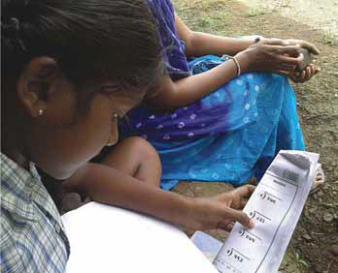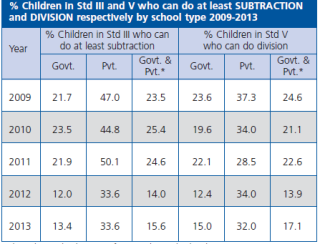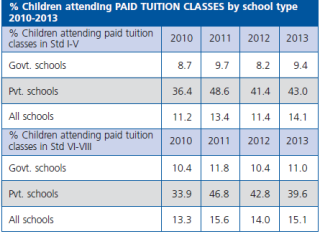Why is Gujarat so “backward” in education? Blame it on government schools, and promote private schools. This is the new mission sought to be put forward by one of the most high profile education advocacy groups, Pratham, which has stolen the limelight all over India for its work with policy makers for the last about eight years. This, apparently, is the only reason why, it indicates (but does not say so directly referring to the state), that Gujarat’s educational standards are so poor. And, it seems to believe, it is not government schools which can come to the children’s rescue but only a rigorous emphasis on private schools.
According to Pratham’s Annual Status of Education Report (ASER), brought out by Pratham on January 15, 2014, Gujarat’s performance in ensuring admission to its rural children at the primary level is worse than 11 out of 20 major states. While a mere three per cent Gujarat children in the age-group were recorded as “out of school”, only eight states performed worse than Gujarat on this score. Worse, the ASER found that the situation deteriorated for the girls in the age group 15-16 (higher secondary level), Gujarat’s 29.7 per cent girls were “out of school” compared to all other 19 major states (click HERE for details).
Things would not have been so bad, ASER tries to imply, had Gujarat emphasized on private schooling in rural areas. In rural Gujarat, 15.1 per cent children in the age group 6-14 go to private schools as against the “best performing state” in education, Kerala, where 68.6 per cent go to private schools. The national average of children going to private schools is double that of Gujarat – 29 per cent. Then, Gujarat’s children spend Rs 140 per month on tuition, as against Rs 231 in Kerala. Here, too, the national average is high – Rs 169.
And what is the “reason” Pratham seeks to offer in order to suggest things are really bad? The advocacy group, which virtually functions as a corporate house, fields Madhav Chavan, CEO, to say that government schools have failed to deliver, and will not deliver. To him, private schools, are the “panacea”. Chavan says, under government aegis, “elementary school system in India was expanding slowly for several decades”, adding, “It is no accident that by 2005 over 92 per cent children were enrolled in schools.”
“But”, he points out, “Something else had begun to change. When ASER started measuring enrolment in 2005, the all-India rural private primary school enrolment was about 17 per cent. ASER seems to have caught a big change in its early stages – rural private school enrolment rose to 29 per cent by 2013. Ironically, after the Indian Parliament declared that it would provide free and compulsory education to all children, the pace of enrolment in private schools quickened.” This, he suggests, has resulted in school education looking up.
Further: “There is a need to urgently deal with the trend of enrollment in private schools in urban and rural areas. Banning private schools or even curtailing them is no more a democratic option unless a visibly better government school alternative can be presented. By introducing 25% reservation for economically weaker sections, the Right to Education (RTE) Act has in fact opened the door for unaided schools being aided by the government. There is no reason why government-aided and privately managed schools cannot be encouraged further”.
Chavan underlines, “States where nearly half the rural population and considerably larger urban population send their children to private schools could lead the way in this matter. Discussions being held at different international platforms suggest that the next Millennium Development Goals for education will be much more focused on measurable learning outcomes.” This, thinks, can be done by discarding the view that the government schools can deliver: “ASER maintains that learning outcomes, especially in the government schools in most states, are poorer today than they were a few years ago.”





